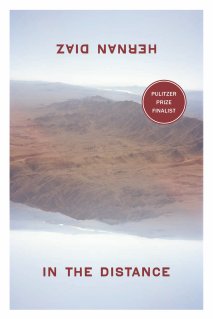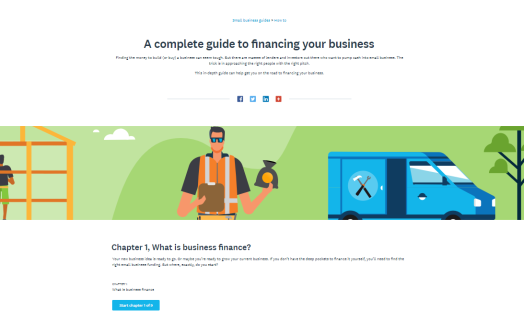You may have seen Mandy Len Catron’s recent article, What You Lose When You Gain a Spouse. I share the author’s experience that many of the costs associated with marriage ring true for those of us who are partnered-and-co-habitating, if not actually married.
But the part of the article that made me yell out loud in agreement was this sentence, a quote from psychologist Bella DePaulo:
When the prevailing unquestioned narrative maintains that there is only one way to live a good and happy life, too many people end up miserable.
I believe we could replace “…live a good and happy life” with just about anything and it would still hold: when there is only one way to “raise a child,” or “save the world,” or “use gender pronouns,” too many people end up miserable.
I also believe we need to question the narrative that there is only one way to write a life story.
Six months ago I attended a long-weekend writing workshop to see if I wanted to sign up for the school’s longer program. The MFA-esque course in fiction and memoir writing would have required a significant shift in life priorities, and I was seriously considering it. I decided not to sign up for a number of reasons, including the fact that I found myself more than a little triggered by the main instructor’s assumptions that:
- Being published would obviously be our primary — if not only — motivation for investing in such a program, and
- The only way to get published is to follow the very specific, tried-and-true story arc.
Now I’m not arguing that the Story Arc doesn’t work for that specific purpose, but I am Very Resistant to the idea that it is the ONLY way to tell a story. I know I know — you have to learn the rules before you can break them, etc. But some of us would rather not pay cash money for yet another experience of learning that we “have to” mold ourselves to someone else’s — or some entire tradition’s — definitions of how we should be in order to be “successful.”
(Related: except for one piece by Arundhati Roy, the authors of every single excerpt we studied, and every member of the longer program’s listed faculty, and every one of my fellow students, were white. I recently read a powerful account of a woman’s experience of racism during a writing class and am grateful that none of my fellow workshoppers behaved as unskillfully! Still, I am weary of wondering if I am the only one in the room who even notices details like those I listed above. And I wish it were possible for me to simply appreciate the curriculum, rather than also having to weigh the pros and cons of bringing up what — and whom — it leaves out.)
And so, rather than polish my craft under the watchful mentorship of professional writing teachers, I continue to write rambling, unpolished pieces for… myself. And you 🙂
***
Speaking of stories, I loved Tommy Orange’s There There. My friend Mike, the most prolific recommender of books I know, suggested I read it long before the New York Times listed it as one of their best books of 2018, but I didn’t get to the top of the waiting list for the library’s electronic copy until the end of December. Took me only two days to finish as I couldn’t put it down.
As a follow-up, Mike suggested Terese Marie Mailhot’s Heart Berries: A Memoir. “A much different book,” he said, “but crazy intense as well.”
Wow wow wow, so much REAL!
And a very interesting structure. To be honest I can’t remember whether it follows THE Arc or not; there were so many other details that held my attention, including the author’s choice to name the names of those who had harmed her and her mother.
Even before reading Heart Berries, I’d spent a fair bit of time lately thinking about:
- The ownership of stories (as in: what are the ethics of telling other people’s stories, even if they belong to the author as well?);
- The difference between what actually happened and what we remember, and how much / when that difference ultimately matters; and
- The many ways we (as individuals, families, institutions, a society in general) practice “healing” and “justice” in the aftermath of the various types of trauma we cause each other, sexual and otherwise.
There’s a lot to sift through and process. In the book and in our own lives, clearly.
The very next book I read was Maggie Nelson’s Bluets, also a memoir of sorts, which I discovered because a bunch of people on The Creative Independent (a collection of essays and interviews that Kickstarter publishes to support the emotional and practical needs of creative people) keep recommending it.
And now I would like to recommend it to you! Nelson’s writing in Bluets is beautiful, lyrical, and explicit in its exposition of the messy, nonlinear cycle of remembered joy –> nostalgia –> shattering grief –> –> coming back together again.
As I was reading Bluets I couldn’t help but notice the similarities between its structure / tone / the author’s approach to writing about vulnerability / relationships / heartache (etc) and Mailhot’s in Heart Berries. Because I like being right, I said to Scott, “she must have been inspired by Maggie Nelson,” though I knew full well he hadn’t read either book.
***
In an April newsletter from independent publisher Catapult, they announced their latest offering, Meander, Spiral, Explode: Design and Pattern in Narrative, by Jane Alison. I look forward to reading its “deeply wacky pleasures,” as described in this New Yorker review.
In the meantime I can’t stop thinking about the excerpt quoted in the book’s description:
For centuries there’s been one path through fiction we’re most likely to travel— one we’re actually told to follow—and that’s the dramatic arc: a situation arises, grows tense, reaches a peak, subsides . . . But something that swells and tautens until climax, then collapses? Bit masculosexual, no? So many other patterns run through nature, tracing other deep motions in life. Why not draw on them, too?
I thought about sending a copy to the writing program’s leader, who also happens to be an acquaintance of mine, but I suspect I’m only tempted to do so for ego-boosting reasons (Scott points out that this piece isn’t exactly a conversation starter).
Also, it’s sold out.
***
A few weeks ago, after the similarities had been gnawing at me for months, I resorted to Googling whether anyone else had, in internet-discoverable format, compared Mailhot’s style in Heart Berries to Maggie Nelson’s in Bluets.
What I found was so much more exciting than that: an entire Atlantic article in which Mailhot describes Bluets as a critically-important inspiration for her own work, and tangentially, her marriage.
She goes on to critique “the established MFA aesthetic” (which she describes as “essentially white”):
I’m suspicious of when we try to compartmentalize the formula for success as an author, instead of just inviting the person to be as weird as they need to be to express something. Let them be the person they’re supposed to be, instead of trying to mold them into the aesthetic of this moment. It’s so difficult and important for teachers to try to bring that weirdness out.
Again, I’m tempted to substitute any other description of identity where the word “author” appears here. Why not challenge the compartmentalized formula for success as a woman, a man, a couple, an employee, or anything else for that matter?
I read these quotes as Calls to Action to become the teacher / friend / sister / daughter / partner / colleague that I want to be: the one who, by fully embracing both my weird and conventional qualities, contributes to the cycle of bringing out the unapologetically weird and conventional in others. And I offer an immense Thank You to those of you who have let your own evolving self shine forth, as this has helped me come to love and express my own.

 A chance wander through a
A chance wander through a  The protagonist musters a surprising ability to face a range of often unfortunate conditions with equanimity and honor, while continuing to forge ahead with his seemingly-impossible quest. (In this sense he reminds me quite a bit of the convict in William Faulkner’s
The protagonist musters a surprising ability to face a range of often unfortunate conditions with equanimity and honor, while continuing to forge ahead with his seemingly-impossible quest. (In this sense he reminds me quite a bit of the convict in William Faulkner’s 
